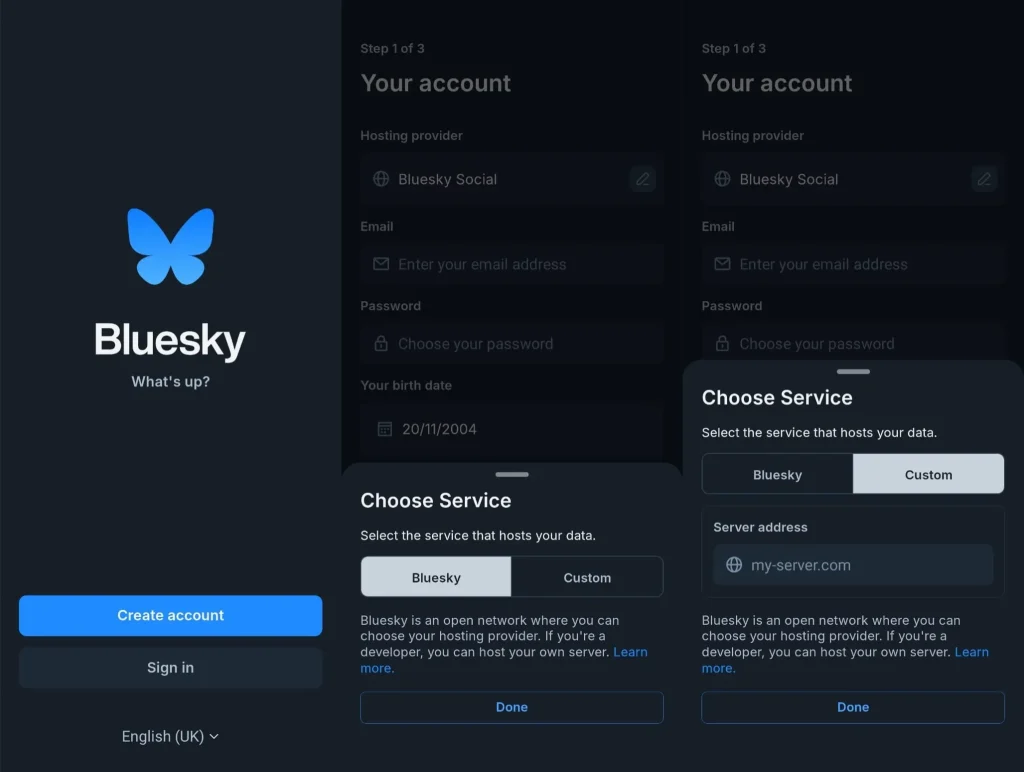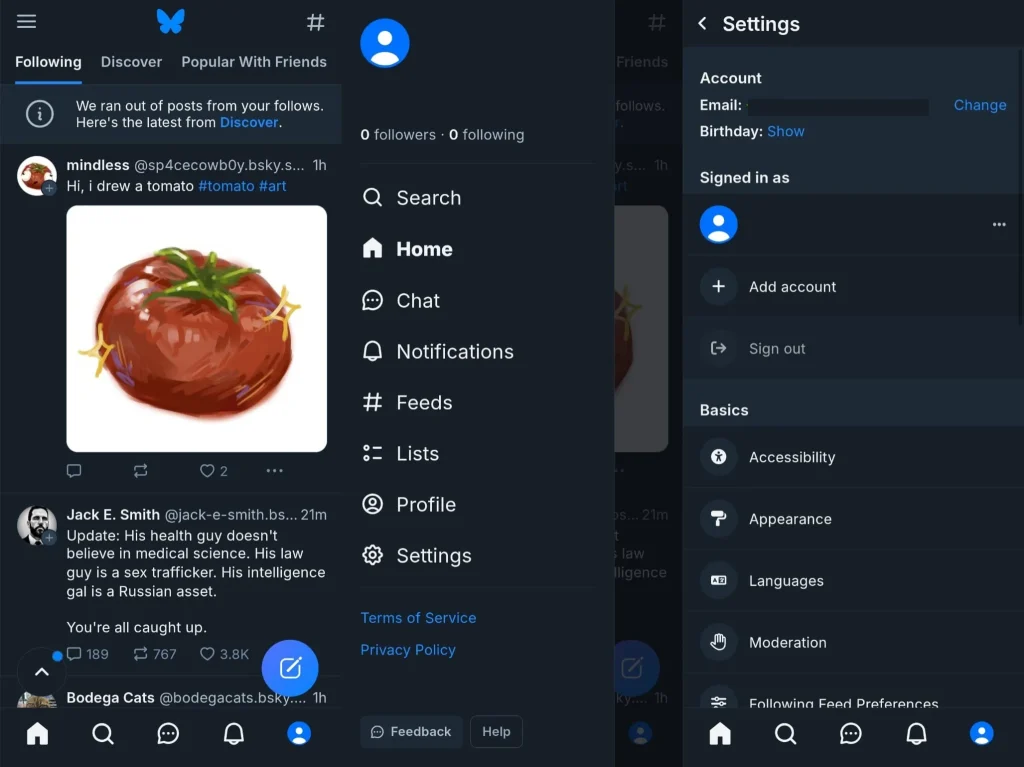Bluesky started as a project under Twitter (now X) but has since evolved into something entirely unique. While its user interface might resemble X, the underlying technology and concept stand apart. This platform represents a new approach to social media, emphasizing decentralization and user control. From its inception to its signup process, Bluesky offers a fresh alternative for those seeking a change.
Donald Trump’s landslide victory in the US election spurred many X users to explore alternative platforms. Bluesky quickly became one of the most popular choices, attracting a surge of interest. This rise in popularity highlights a growing demand for decentralized social media options that prioritize independence and user autonomy. Bluesky’s journey from an internal Twitter project to a standalone platform has captured the attention of millions.
Bluesky has recently achieved significant growth, adding over a million new users and reaching an all-time high of 15 million active members. This milestone reflects its appeal as a fresh, innovative option in a crowded social media landscape. Originally created under Jack Dorsey’s leadership at Twitter, Bluesky now stands on its own, offering a decentralized network where users have greater control over their data and experience.
If you’re considering leaving X for a different platform, Bluesky presents a compelling alternative. Its focus on decentralization and unique approach to social networking sets it apart from traditional platforms. With its growing user base and expanding features, Bluesky provides an exciting opportunity for those ready to embrace a new way of connecting online.
How did Bluesky begin?
In 2019, when X was still known as Twitter, Jack Dorsey, then the company’s CEO, launched a new initiative called Bluesky. Twitter funded the project, envisioning it as a step toward innovation in social media. Dorsey’s vision aimed to explore new possibilities for how people connect and share online.
By 2021, Bluesky transitioned into an independent company, taking its first major step toward autonomy. The following year, Twitter, with Bluesky’s consent, officially ended their service agreement, allowing the project to forge its path. This separation marked a pivotal moment in Bluesky’s journey, giving it the freedom to pursue its unique goals.
Bluesky set out to create an open and decentralized standard for social media, a sharp contrast to Twitter’s centralized structure with servers distributed worldwide. The project aimed to redefine how social networks operate by emphasizing user control and interoperability. Its decentralized approach promised to challenge traditional models of content moderation and data management.
As Bluesky evolved, it solidified its commitment to decentralization and innovation. By stepping away from Twitter’s infrastructure, the platform carved out its identity, offering an alternative vision for the future of social media—one rooted in openness and collaboration rather than centralized control.
What are decentralized social media networks?
Bluesky stands apart from X by using the ‘Authenticated Transfer Protocol (ATP),’ which the company claims allows ‘separate social networks to exist within a single hub.’ This approach resembles Mastodon’s ActivityPub protocol, which also supports the creation of federated and decentralized networks.
A decentralized network like Bluesky enables users to seamlessly transfer their accounts between different Bluesky providers. Unlike centralized platforms such as Facebook, Instagram, or Twitter, Bluesky isn’t a standalone product or service. Instead, it serves as a set of standards and protocols that developers and communities can adapt to their needs. Users can choose to rely on Bluesky’s servers or create and host their own personal server for their account.
When we examined the technical requirements for hosting a private server, we discovered surprisingly low hardware demands. Hosting a Bluesky server requires a minimum of just 1GB RAM, which is nearly half the memory consumed by modern browsers like Chrome, Edge, and Safari. This low barrier to entry makes self-hosting an accessible option for individuals and small communities.
Bluesky’s design prioritizes flexibility and decentralization, empowering users to take control of their social media experience. By offering the option to use its own servers or host private ones, Bluesky provides a customizable platform that breaks away from the centralized norms of traditional social networks.

How do I sign up for Bluesky?
The sign-up process is straightforward. Open the Apple App Store or Google Play Store on your phone, search for Bluesky, and install the app. Like other social media platforms, you’ll need to create a new account. After verifying your email and logging in, you’ll see that Bluesky’s interface closely resembles X/Twitter.
Bluesky features a bottom bar with four tabs. The first tab is Home, where you’ll find a vertically scrolling feed with options to Like, Repost, Comment, and a three-dot menu for copying and sharing. The second tab lets you search for other users and posts. The third tab provides quick access to your DMs. The fourth and fifth tabs allow you to check notifications and view your profile. If you’ve used X before, you’ll feel right at home with Bluesky’s user interface.

How does it differ from X/Twitter?
Unlike Twitter, Bluesky allows users to create their own unique handle. For example, if you work for a company named ‘abc,’ you could use a handle like yourname@abc.org, and your organization can verify it. Similarly, brand accounts can customize their handles and allow others to use them. When users sign up for Bluesky, the platform automatically subscribes them to its built-in moderation service.
As a decentralized platform, Bluesky gives users the option to host their own servers instead of relying on company-owned servers, as is the case with X (formerly Twitter). This decentralization empowers users to have more control over their own experience.
However, moderation works differently. X relies on both automated systems and human teams to label and manage prohibited content, but Bluesky may only moderate posts on its own servers.
If users choose not to use Bluesky’s servers, they can opt out of the official moderation guidelines and create their own or use third-party solutions. This means that while moderation on Bluesky’s servers may be effective, it may not apply to other independently hosted servers.



 Viesearch - The Human-curated Search Engine
Blogarama - Blog Directory
Web Directory gma
Directory Master
http://tech.ellysdirectory.com
8e3055d3-6131-49a1-9717-82ccecc4bb7a
Viesearch - The Human-curated Search Engine
Blogarama - Blog Directory
Web Directory gma
Directory Master
http://tech.ellysdirectory.com
8e3055d3-6131-49a1-9717-82ccecc4bb7a